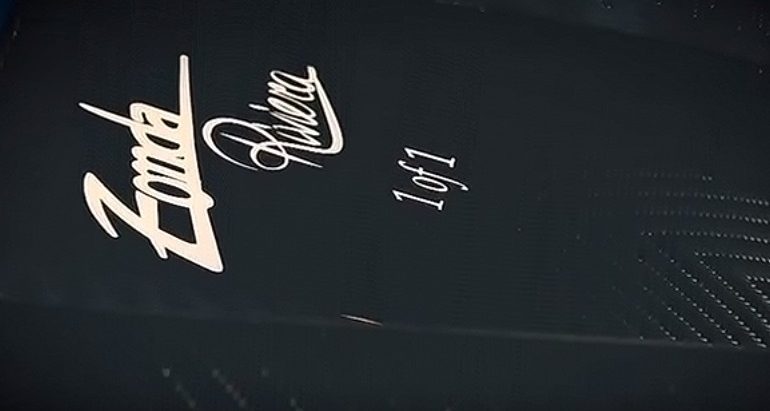Pagani still refuses to let the Zonda die, but we’re not complaining.
Last week, Pagani brought the legendary Zonda back from the dead yet again with the one-off Fantasma Evo, a revamped customer car based on the Zonda F. Despite officially finishing production several years ago, the fabled Italian hypercar keeps getting resurrected by passionate fans with deep pockets commissioning bespoke models from Pagani. Less than a week after the Fantasma Evo emerged, yet another one-off Zonda has been revealed. Like the Fantasma Evo, this latest one-off also originated as a Zonda F before it was transformed into the Zonda Riveria.
This Zonda F was painted in yellow when it originally left the factory. Pagani has given it a thorough makeover with a white finish complemented with blue accents that represent the horizon colors of the French Riveria it’s named after. No official photos have been released of the Zonda Riveria yet, but Pagani has shown it off in a promotional video on Instagram.
Frankly, the low-res video doesn’t do this exquisite hypercar justice. No details have been released about the transformation, but from the video we can see the Zonda Riveria is extensively clad in carbon fiber, and has gained a new roof scoop, LED daytime running lights, carbon canards at the front, and a larger rear wing. No details have been released about the Zonda Riveria’s powertrain, either. The Zonda F it’s based on is powered by a naturally aspirated 7.3-liter V12 engine producing 602-horsepower and 560 lb-ft of torque, enabling the Italian hypercar to sprint from 0-62 mph in 3.6 seconds and 0-124 mph in 9.8 seconds, before topping out at over 214 mph.
We wouldn’t be surprised, however, if the owner asked Pagani to extract even more power from the Zonda’s sublime-sounding V12 AMG engine. The Zonda was supposed to bow out with the track-only Revolucion back in 2013, so it’s a testament to its legacy that the hypercar still lives on today nearly 20 years after it first started production, despite being replaced by the Huayra several years ago.




